Nationality Polish Role Racing driver Rally wins 0 Name Robert Kubica Rally 31 | Rallies 31 Total points 40 Active years 2013–present Height 1.84 m | |
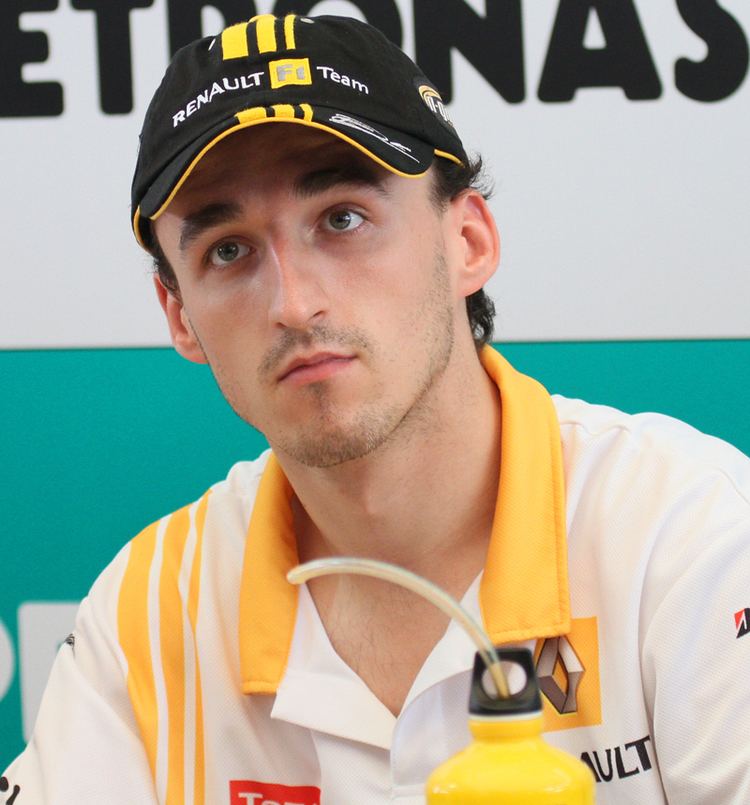 | ||
Born 7 December 1984 (age 40) Krakow, Poland ( 1984-12-07 ) 20052013 World Series by RenaultWorld Rally Championship-2 200820082013 Lorenzo Bandini TrophyPolish Sportspersonality of the YearFIA Personality of the Year Similar People Nick Heidfeld, Sebastien Ogier, Fernando Alonso, Marcin Gortat, Robert Lewandowski Profiles | ||
Parents Anne Kubica, Artur Kubica | ||
Valentino rossi vs robert kubica 2014 monza rally master show
Robert Józef Kubica ([ˈrɔbɛrt kuˈbit͡sa]; born 7 December 1984) is a Polish current rally and former Formula 1 racing driver. He became the first Polish driver to compete in Formula One. Between 2006 and 2009 he drove for the BMW Sauber F1 team, promoted from test driver to race driver during 2006. In June 2008, Kubica took his maiden Formula One victory in the Canadian Grand Prix, becoming the first Polish driver to win a Formula One race.
Contents
- Valentino rossi vs robert kubica 2014 monza rally master show
- Robert kubica tribute polish live legend
- Karting
- Junior formulae
- BMW Sauber 20062009
- Renault 20102011
- Rally crash
- Return to rally 20122016
- WEC LMP1
- Formula E
- Formula One 2017
- Career summary
- Complete Formula Renault 2000 Eurocup results
- Complete Formula Three Euroseries results
- Complete Formula Renault 35 Series results
- Complete Formula One results
- References
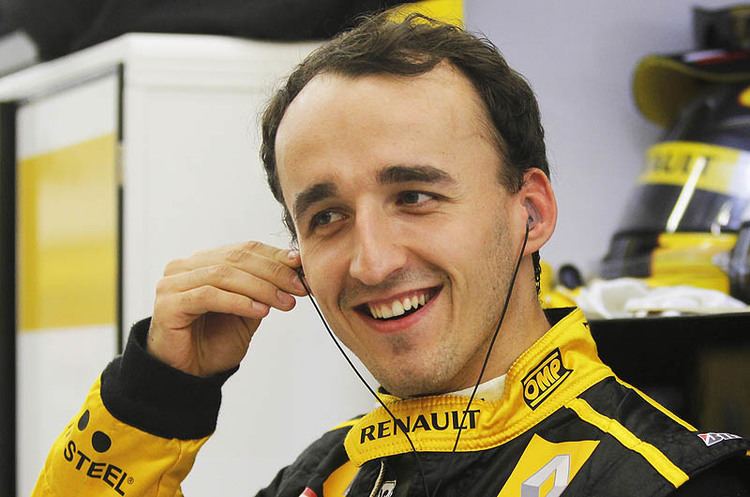
On 6 February 2011, Kubica was seriously injured in a crash at the Ronde di Andora rally, in which his right forearm was partially severed. He was taking part in the rally for personal enjoyment. Kubica told Italian newspaper La Gazzetta dello Sport in a bedside interview that he could feel the fingers in his right hand and was determined to make a swift return to Formula One in 2011. Since his return to good health, however, he initially stated that a return to Formula One would be "nearly impossible" because of his injury. Since then, he has taken part in two tests with his former team Renault, admitting that a Formula One return in the near future was not an impossibility, with Renault team boss Cyril Abiteboul labelling Kubica as an 'option' for 2018.
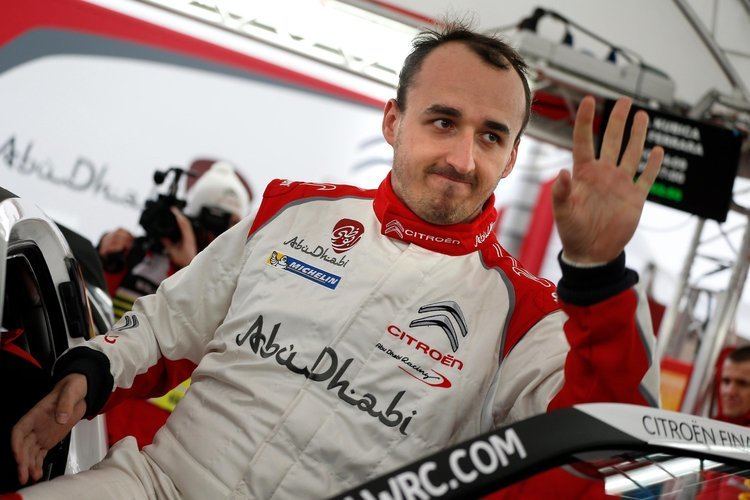
Kubica returned to racing in September 2012, winning a minor rally in Italy. Kubica was named one of "The Men of the Year 2012" by Top Gear magazine for his return to auto racing. In 2013, he drove for Citroën in the European and World Rally-2 Championships. He went on to win the inaugural WRC-2 title, and moved to the WRC championship full-time in 2014, driving a Ford Fiesta RS WRC prepared by M-Sport.
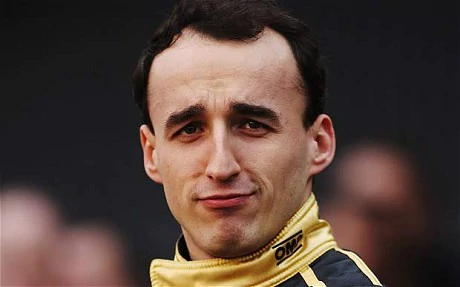
Robert kubica tribute polish live legend
Karting
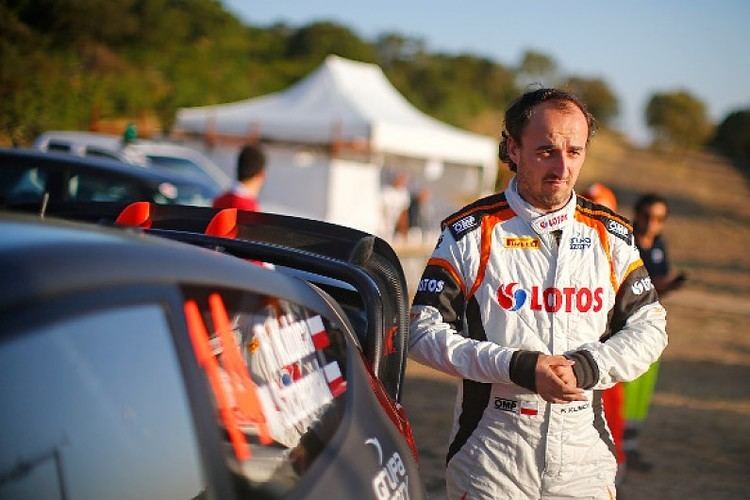
Kubica developed his love for all kinds of cars at the young age of four when he spotted a small off-road vehicle, powered by a 4 bhp (3.0 kW) petrol engine. After long talks with his parents, his father, Artur, bought him the car and young Kubica spent long hours driving around plastic bottles. When he got older it became apparent that he needed better equipment, so his father bought him a go-kart. However, Kubica was too young to start racing in the Polish Karting Championship as he was under the age of ten. When he entered the championship, he won six titles in three years. After his third season, Kubica decided to switch to a more competitive series in Italy. In 1998 Kubica became the first foreigner to win the International Italian Junior Karting Championship.
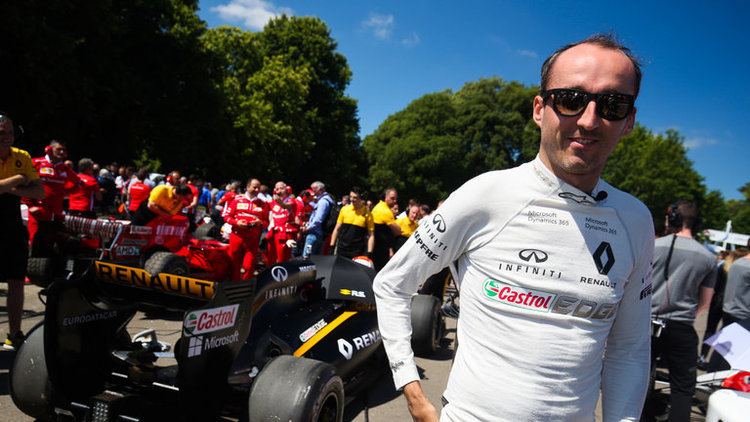
Kubica also scored second place in the European Junior Karting Championship and won the Junior Monaco Kart Cup held on part of the Formula One Grand Prix track. A year later, he defended his title in Italy and also competed in the International German Karting Championship. He also won the Monaco Kart Cup for the second time in a row, as well as the Margutti Trophy and Elf Masters races. In 2000, his last season in karting, Kubica scored fourth places in both the European and World Championships.
Junior formulae

Kubica started his professional career in 2000, as a test driver for a Formula Renault 2000 car. During his first professional season in Formula Renault, Kubica scored his maiden pole position and also became a member of Renault's driver development programme. In 2002 Kubica won four races and scored a second place in the Italian Formula Renault 2000. He was also seventh in the Formula Renault Eurocup. At the end of the year he took part in a Brazilian Formula Renault 2000 race held at the Interlagos circuit. This one-off appearance resulted in a dominant win.
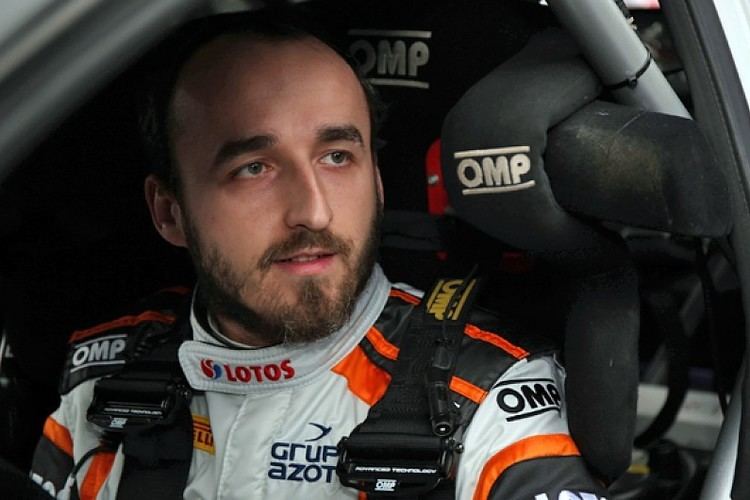
After Formula Renault, Kubica moved to the Formula Three Euro Series. However, his move was delayed by a road accident which left him with a broken arm, and titanium screws holding it together. At his delayed debut at Norisring, Kubica, driving with a plastic brace and 18 titanium bolts in his arm, won the race. He finished the season in 12th place. At the end of the year, Kubica won a street race in Sardinia and came fifth in races held in Macau and Korea. He ended his second season in the Formula 3 Euro Series, spent with the factory Mercedes team, in 7th position. In November 2004, he scored pole position in the Macau F3 Grand Prix, where he broke the lap record, but finished second in the race.
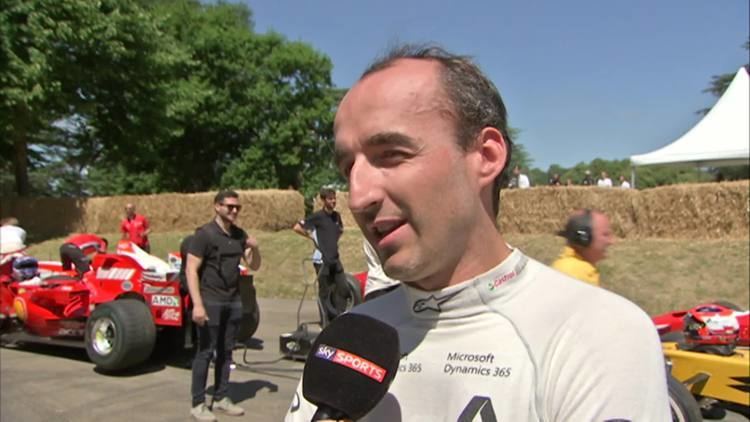
In 2005 he won the World Series by Renault championship with the Epsilon Euskadi team, earning Formula One tests with Renault.
BMW Sauber (2006–2009)
2006
In 2006, Kubica became the official reserve driver for the BMW Sauber Formula One team. His results in both Friday testing and private test sessions, along with the words of BMW Sauber team principal Mario Theissen, led to speculation that he would become Poland's first ever Formula One racing driver in 2007. In August 2006, Kubica's teammate, Jacques Villeneuve, complained about headaches after his accident during the German Grand Prix; he was deemed unfit to race by the team, against his own belief, and Kubica was chosen by the team management to replace him at the Hungarian Grand Prix. Kubica qualified ninth, beating his more experienced teammate Nick Heidfeld. In the race, he finished in seventh place, but was disqualified after the race for having an underweight car. Villeneuve decided to leave the BMW Sauber team soon after the race, and Kubica's position in the team for the remainder of the season was confirmed by BMW.
Kubica had a disappointing race at the Turkish Grand Prix, finishing in 12th place after a mistake in tyre choice. Heidfeld, who was delayed in a first-corner accident, placed behind Kubica. In his third race, the Italian Grand Prix, Kubica finished in third position, and became the first Polish driver to appear on a Formula One podium, as well as the first Polish driver to lead a Grand Prix. He was the first driver since Alexander Wurz in 1997 to finish on the podium within his first three Formula One starts.
In China, he finished 13th, again after a mistake in tyre choice. After going off track at the first turn of the race, he moved from 17th position to fifth, before pitting. He was the first to change from intermediate tyres to dry tyres after the wet track started to dry. This decision was made too early: a very slow next lap in extremely wet and slippery conditions and another pit stop to change back to intermediates cost him his place in the points.
2007
Kubica performed well during the 2007 season, finishing consistently in point scoring positions. At the Canadian Grand Prix Kubica had a serious crash approaching the hairpin on lap 27, in which his car made contact with Jarno Trulli's Toyota, and hit a hump in the grass which lifted the car's nose into the air and left him unable to brake or steer. The car then hit the concrete retaining wall and rolled as it came back across the track, striking the opposite wall on the outside of the hairpin and coming to rest on its side. The speed measured when his car clipped the barrier was 300.13 km/h (186.49 mph), at a 75-degree angle, subjecting Kubica to an average deceleration of 28 g. After data from the onboard accident data recorder had been analysed it was found that he had been subjected to a peak G-force of 75 G. Under safety car conditions, Kubica was removed from the car and taken to the circuit's medical centre, where he was announced to be in "stable" condition. Shortly afterwards, his manager Daniele Morelli said Kubica was conscious and talking. It was initially reported that Kubica could have a broken leg. However, Mario Theissen later confirmed that he was not seriously injured.
Further reports from late evening on race day, directly from the hospital, confirmed that Kubica had suffered a light concussion alongside a sprained ankle. After being kept in overnight for observation, Kubica left hospital the following day. On 14 June it was announced that as a precaution, Kubica would not race at the United States Grand Prix and would be replaced by test driver Sebastian Vettel. After missing Indianapolis, he returned for the French Grand Prix where he qualified and finished in fourth place, receiving ITV broadcaster Martin Brundle's driver of the day award. He then went on to finish fourth again at the British Grand Prix.
2008
Kubica's retention as race driver for 2008 was confirmed on 21 August 2007. Over the first half of the season, Kubica qualified and finished strongly, including his and BMW Sauber's first pole position at the Bahrain Grand Prix and second-place finishes at the Malaysian and Monaco Grands Prix.
On 8 June 2008 at the Canadian Grand Prix, Kubica achieved his first Formula 1 victory. He started second on the grid and passed race leader Lewis Hamilton in the first round of pitstops after the BMW Sauber pit crew completed a faster pitstop. On leaving the pits, Kubica and Kimi Räikkönen's Ferrari halted at the pit lane exit, waiting for the red pit exit light to change. Hamilton, running immediately behind them, missed the light and crashed into Räikkönen's Ferrari, eliminating both cars from the race. Kubica rejoined the race well positioned for the eventual victory. He passed Heidfeld's sister BMW Sauber, running one refuelling stop to Kubica's two stop strategy, and gained the necessary 24 seconds over Heidfeld to ensure that he maintained the lead after his second stop 22 laps later. The BMW Saubers remained first and second to the end of the race. Kubica later joked that he should thank Hamilton for electing to crash into Räikkönen instead of him. The win gave Kubica the lead in the drivers' championship.
BMW Sauber's results were weaker over the second half of the season. At the French Grand Prix at Magny-Cours, Kubica finished 5th, reporting that this was a lost race, complaining about aerodynamic problems with the car. Kubica's strongest result of the latter part of the year was in Japan where he qualified sixth. At the start, several drivers braked too late for the first corner. Kubica took an inside line overtaking several cars and emerged in the lead. He led for 16 laps, but lost his lead to Fernando Alonso at the first round of pit stops. Kubica finished second after defending his position towards the end of the race against Räikkönen in a faster Ferrari (his fastest race lap was 0.6 seconds quicker than the Pole's) Apart from that, Kubica achieved podiums in a race in Valencia and in the rain affected race at Monza. Kubica finished the year fourth in the drivers' championship.
2009
At the 2009 season opener in Melbourne, Kubica qualified fourth on the grid. During the race, he was in third place and closing the gap to the front two cars before making contact with Sebastian Vettel while trying to overtake him. After the incident, Kubica continued briefly, but crashed into a wall at the next corner because his front wing had become stuck under the car. Vettel was later deemed responsible for the accident, and given a 10-place penalty on the grid for the next race in Malaysia.
BMW motorsport director Mario Theissen claimed that Kubica would have won the race ahead of Jenson Button had it not been for Vettel.
At the Malaysian Grand Prix, Kubica qualified in eighth place, but was promoted to sixth following Vettel's ten-place grid penalty for causing the crash in Australia, and Rubens Barrichello's five-place grid drop for changing his gearbox. However, he retired very early in the race with engine problems. The next two races, the Chinese Grand Prix and the Bahrain Grand Prix were disappointing for the BMW Sauber team as both Kubica and his teammate Heidfeld finished outside the points with a non-competitive car.
For the next race in Barcelona, BMW Sauber prepared a modified version of the F1.09. The car proved more competitive but a mistake in fitting the tyres to Kubica's car during Q3 meant he could only qualify in 10th position. In the race, after a bad start (due to a clutch issue) he finished once more out of the points. Kubica suffered from an engine failure during second practice in Monaco, and retired from the Grand Prix due to a brake issue. At the Turkish Grand Prix, the team introduced the double diffuser. The car's performance improved and Kubica managed to score his first points of the season with a 7th place. In the next 3 races both BMW Sauber drivers finished outside the points again, but during the European and Belgian Grands Prix again proved to be competitive, scoring 8th and 4th positions respectively. In Italy, Kubica suffered engine trouble in qualifying and then retired from the race due to an oil leak. At the Singapore Grand Prix, Kubica finished 8th, defending his position from Kazuki Nakajima and Räikkönen in the last laps. He later stated it was "the most difficult point I have ever scored". At the Brazilian Grand Prix, Kubica scored his first podium of the season despite engine temperature problems by finishing in 2nd place, 7.6 seconds behind winner Mark Webber. The podium was BMW's second of the season.
On 29 July 2009, BMW announced that they would leave Formula One at the end of 2009, which made Kubica a free agent for the 2010 season. For the 2010 season, it was announced that he had signed for Renault F1, the team he tested for during his junior career.
Renault (2010–2011)
2010
Kubica moved to the Renault team for 2010. His position was briefly put in doubt, however, by the team evaluating its future in the sport following the 2009 season in the wake of the "Crashgate" scandal and the parent company's financial problems. This resulted in a Luxembourg-based investment firm, Genii Capital, taking a 75% stake in the team; Renault retaining the remaining 25%. Eric Boullier was also appointed as the new team manager. Kubica said he might not stay with Renault, as his contract was only valid if the parent company had a controlling stake in the team, but he then decided to remain with them. On 31 January 2010, it was announced that Vitaly Petrov was to be Kubica's teammate.
It was reported in Autosport that Ferrari driver Felipe Massa had until the 2010 British Grand Prix to prove the Maranello outfit that he is worth hanging onto or Kubica could take his seat in 2011. However Ferrari re-signed Massa for 2011, leaving Kubica without a seat at the Italian team.
On 7 July 2010, it was confirmed that Kubica had extended his contract with Renault to 2012.
At the opening race of the 2010 season in Bahrain, Kubica was tagged by Adrian Sutil and spun on the opening lap but recovered to 11th. At the next race in Australia, he finished second after starting in ninth position. Fourth in Malaysia and fifth in China left him in seventh place in the drivers' championship, 20 points behind championship leader Jenson Button. Kubica felt that had there not been a second safety car period in China he could have finished on the podium. In Spain he finished eighth, but followed this up with another podium in Monaco, holding third throughout after losing second at the start to Sebastian Vettel. At the Turkish Grand Prix, he was held up behind Nico Rosberg for the second time in the season after Malaysia, and finished sixth.
In Canada, Kubica finished seventh after an eventful race and problems with tyre degradation which made his race difficult, but did set the first fastest lap of his career in the race's closing stages. He added a fifth in Valencia and seventh in Germany before taking his third podium of the season in Belgium. He was competitive throughout the weekend, qualifying third, and only a bungled pitstop cost him second to Mark Webber. In Singapore, he qualified eighth in front of Schumacher. During the late stages of the race, he was forced to pit from sixth place due to a puncture. He was released from the pits to twelfth place, but with the help from superior grip and a series of overtaking moves—his move against Sutil was favourably compared to the incident between Webber and Hamilton—was able to claim seventh place, ultimately gaining a place from his qualifying result. In Suzuka, he managed to trail the Red Bulls throughout the weekend and translated it into a strong third place in qualifying. However, despite getting a good start and overtaking Webber at the start of the race, but would retire during the safety car period after losing one of his rear tyres.
Formula One journalist Mark Hughes remarked that Kubica was currently "arguably the best driver", considering the season so far. He emphasised Kubica's strong showing in tracks where Hughes believed that the differences in driver skills are able to overwhelm the differences in the capability of the cars; namely, Monaco, Spa and Suzuka. Kubica managed to finish on the podium behind the Red Bulls except in Suzuka where he was strong throughout the weekend nevertheless, despite retiring from the race through no fault of his own.
2011
Kubica was retained by Renault – rebranded as Lotus Renault GP through Lotus Cars sponsorship – into the 2011 season, again partnered with Petrov. He tested the team's new car, the Renault R31, for the first time in Valencia on 2 February. On the last day of testing in Valencia he set the fastest time of the session.
Rally crash
On 6 February 2011, Kubica was injured in a crash on the first stage of the Ronde di Andora rally. He was driving a Super 2000-specification Škoda Fabia in Testico when his car left the road at high speed and hit a crash barrier, near the church of San Sebastiano. Kubica was trapped in the car for more than an hour before rescue workers were able to extricate him. He was flown by helicopter to Santa Corona Hospital in Pietra Ligure near Savona, where it was confirmed that he had suffered partial amputation of his forearm, compound fractures to his right elbow, shoulder and leg, as well as significant loss of blood. The severity of his injuries was the result of the crash barrier penetrating the car's cockpit, and hitting Kubica, while leaving his co-driver unscathed. Kubica underwent a seven-hour operation by seven doctors split into two teams, without complications. Two more lengthy operations to repair fractures to his leg, shoulder and arm were performed successfully a few days later. The condition of his hand was not clear for some time and as a result he missed the 2011 season. As he was unable to start the season, Lotus Renault signed his former BMW Sauber teammate Nick Heidfeld as his replacement on 16 February, while Kubica still remained signed with the team for the 2011 season. Bruno Senna replaced Heidfeld later in the season, at the Belgian Grand Prix. Kubica was released from hospital to begin his rehabilitation on 24 April 2011. In November 2011 it was announced that Kubica would not be ready for the beginning of the 2012 season, forcing Renault to begin the season with two other drivers, Kimi Räikkönen and Romain Grosjean.
Return to rally (2012–2016)
Kubica's recovery was dealt another setback after he re-broke his right leg, when he reportedly slipped on ice near his home in Italy, on 11 January 2012. He remained out of competitive racing for most of 2012, but returned to compete in the Ronde Gomitolo Di Lana in a WRC car on 9 September. He won the rally, finishing one minute ahead of the second placed driver.
In 2013, Kubica continued his return, focusing on rallying. He drove for Citroen in the European and World Rally-2 Championships. His first event was the Rally de Portugal, in which he was competitive, but crashed and issues with his car led to him finishing in 6th. Then, at the Acropolis Rally, Kubica won, finishing nearly 90 seconds ahead of second placed Yuriy Protasov. He repeated this success at the Rally d'Italia winning ahead of Abdulaziz Al-Kuwari by 4 minutes. At the 2013 Rally Finland Kubica lost to Jari Ketomaa by nearly 90 seconds. The Rallye Deutschland was a big success. Not only did the Pole win ahead of Elfyn Evans by 12.9 seconds, he became the leader of the World Rally-2 Championships. He re-gained this position (Al-Kuwari became the leader in Australia) at the Rallye de France, again beating Evans, this time by 4 minutes. He won again at the Rally RACC Catalunya, his fifth victory of the season. With this result he was able to clinch the championship, as his nearest rival Al-Kuwari was too far behind to regain the first position in the championship. Kubica conducted a number of simulator tests with the Mercedes Formula 1 team which showed promise, but limitations in the range of motion of his injured arm would prevent him from driving in twisty circuits like Monaco due to the tight confines of an F1 cockpit.
In 2014, Kubica started in the first round of the ERC season. He won the Internationale Jänner Rallye to claim his first victory in that championship, after coming very close on a number of occasions in 2014. His strong results in the stages for this rally eventually netted him the "Ice Master" trophy for the best driver in snow events that season. For the rest of the season, he participated in the main WRC class for the RK M-Sport, running as separate team, backed by Polish oil company Lotos. Kubica began his WRC campaign by taking the lead of the Monte Carlo Rally through the first two stages, but later retired on the second day after crashing out on SS9. Kubica suffered from a string of bad luck for the rest of the season, being fast on occasion but rarely managing to convert his speed into results. His best result was a 6th place at the Rally Argentina, a place lower than his highest finish in 2013 (5th in Germany) in a WRC-2 car. He finished the season in 16th place with 14 points. He finished the year on a positive note by winning the non-championship Monza Rally Show, beating motorcycle legend Valentino Rossi to second.
After speculation following the 2014 WRC season, Kubica announced he would be racing in 2015, still running Ford Fiesta RS WRC and backed by Lotos, albeit no longer prepared by M-Sport.
In 2016 due to a lack of funding his sole WRC rally was the Monte Carlo. In March 2016 he took part in the Mugello 12 Hours, a round of Creventic's International Endurance Series, in a GT3 Mercedes. In September 2016 he competed in the Renault Sport Trophy at the penultimate round of the season in Spa, Belgium.
WEC LMP1
On 2 February 2017, Kubica was signed by the ByKolles privateer LMP1 team in the FIA World Endurance Championship. This came after he tested their car in November 2016 during the WEC rookie test at Bahrain, and lapped faster than the team's regulars managed on the race weekend.
Oliver Webb will remain with the team, with a third driver for the Nissan-powered CLM P1/01 yet to be named.
After the pre-season testing at Italy's Autodromo Nazionale Monza, where Kubica did not do any running, the driver announced via social media that he would not be participating in the forthcoming season.
Formula E
On 2 May 2017, Kubica partook in an independently organized test of a Formula E car at Donington Park, with an aim of partaking in the New York ePrix. This failed to eventuate.
Formula One (2017)
On 5 June 2017, it was announced that Kubica would be driving in a Renault-organized test of their 2012 car, the Lotus E20, at Circuit Ricardo Tormo, his first Formula One event since his accident in 2011.
Renault organised a further test, with Renault boss Cyril Abiteboul stating that 'he was still quick, still consistent and more importantly he still has the enthusiasm he always carried to the team'. He added that there were 'no obvious roadblocks' to an F1 return.
He added to NBC Sports that he could be an option for 2018.
On 24 July 2017, it was announced that Kubica would participate in the test for Renault, which would be held after the conclusion of the Hungarian Grand Prix. Abiteboul, Renault team's boss, said the test will allow the team to fully assess Kubica's current capabilities, and how likely he might be to "return to competition in the upcoming years". Kubica completed 142 laps of the Hungaroring on his return, finishing fourth-fastest nearly 1.5 seconds behind Sebastian Vettel.
Career summary
† As Kubica was a guest driver, he was ineligible to score points.
Complete Formula Renault 2000 Eurocup results
(key) (Races in bold indicate pole position)
Complete Formula Three Euroseries results
(key) (Races in bold indicate pole position) (Races in italics indicate fastest lap)
Complete Formula Renault 3.5 Series results
(key) (Races in bold indicate pole position) (Races in italics indicate fastest lap)
Complete Formula One results
(key) (Races in bold indicate pole position) (Races in italics indicate fastest lap)
† Did not finish the race, but was classified as he had completed more than 90% of the race distance.
